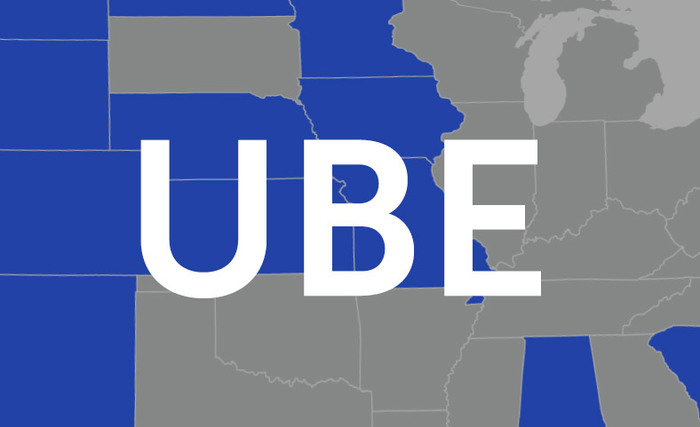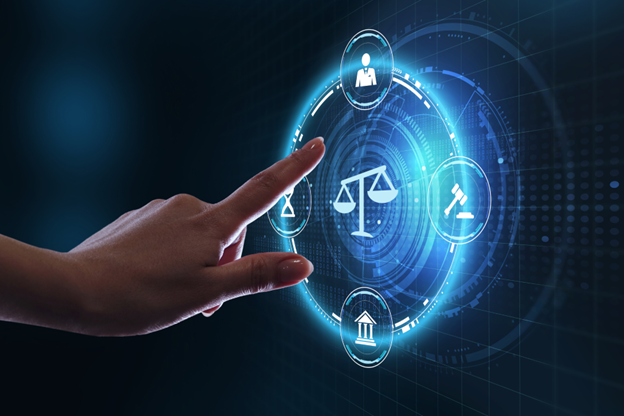
Beyond the Hype: How GPT-4’s Bar Exam Success Will Reshape the Legal Profession
The AI Has Passed the Bar: A New Paradigm for Legal Technology
The legal industry is no stranger to technological disruption, but the recent advancements in generative AI represent a seismic shift, not just an incremental change. For years, the complex, nuanced reasoning required for legal practice was considered a bastion of human intellect, safe from automation. That bastion has now been breached. The news that OpenAI’s GPT-4, a large language model (LLM), has successfully passed the Uniform Bar Examination (UBE) is more than just a fascinating headline; it is a watershed moment. This achievement signals that AI has evolved from a tool for simple data processing into a sophisticated engine capable of complex analysis and generation, forcing a fundamental re-evaluation of how legal services are delivered. This is the most significant GPT in Legal Tech News of the year, and its shockwaves are just beginning to be felt.
This article moves beyond the initial headlines to provide a comprehensive analysis of what this technological milestone means for law firms, in-house counsel, and the legal system at large. We will deconstruct GPT-4’s capabilities, explore its immediate practical applications, confront the critical ethical and privacy hurdles, and offer actionable best practices for navigating this new frontier. The era of AI in law is no longer a distant future; it is the present reality, and understanding its intricacies is now essential for every legal professional.
Section 1: Deconstructing GPT-4’s Legal Acumen
To grasp the profound implications of an AI passing the bar, one must first understand the technological leap it represents. This isn’t merely about pattern recognition or data retrieval; it’s about the emergent capability for sophisticated reasoning within a highly structured and adversarial domain. The latest GPT-4 News highlights a model that has moved far beyond its predecessors in both scale and ability.
What is GPT-4 and Why is it Different?
GPT-4 (Generative Pre-trained Transformer 4) is the latest iteration in OpenAI’s series of LLMs. Its power stems from its massive scale and refined architecture. The latest GPT Architecture News reveals a model with an astronomical number of parameters, trained on a vast and diverse corpus of text and code from the internet. This immense training allows it to understand grammar, context, facts, and, crucially, the subtle relationships between concepts. Unlike earlier models, GPT-4 exhibits significantly improved performance in “zero-shot” and “few-shot” learning, meaning it can perform tasks it wasn’t explicitly trained for with minimal prompting. This adaptability is key to its success in the multifaceted legal field, where problems are rarely identical.
Benchmarking Legal Proficiency: From GPT-3.5 to GPT-4
The performance gap between GPT-3.5 and GPT-4 on legal benchmarks is staggering. While the GPT-3.5 News often focused on its creative text generation, its legal reasoning was inconsistent. On a simulated bar exam, GPT-3.5 scored around the 10th percentile, a failing grade. In stark contrast, GPT-4 scored in the 90th percentile. This isn’t just a quantitative improvement; it’s a qualitative transformation. The latest GPT Benchmark News shows that this leap is consistent across various professional and academic exams, but its success on the bar exam is particularly noteworthy due to the test’s combination of multiple-choice questions (MBE), essays (MEE), and performance tests (MPT), which require different cognitive skills.
Beyond Rote Memorization: Demonstrating Legal Reasoning
Passing the bar exam requires more than just recalling legal statutes. It demands the ability to apply legal rules to novel fact patterns, construct logical arguments, and identify salient issues—the core of legal reasoning. GPT-4’s success demonstrates its ability to perform the “IRAC” (Issue, Rule, Application, Conclusion) method, a foundational framework for legal analysis. It can identify the legal issue in a hypothetical scenario, state the relevant rule of law, apply that rule to the specific facts, and draw a reasoned conclusion. This ability to synthesize and apply knowledge, rather than just regurgitate it, is the critical breakthrough that has captured the attention of the legal world and is a central theme in current GPT Research News.
Section 2: Practical Applications: Integrating GPT into the Modern Law Firm

The theoretical capabilities of GPT-4 are impressive, but its true value lies in its practical application within the daily workflows of a law firm. Forward-thinking legal tech companies are already working on GPT Integrations News, building specialized tools on top of this powerful foundation. These tools promise to enhance efficiency, reduce costs, and free up lawyers to focus on higher-value strategic work.
Supercharging Legal Research and Due Diligence
Traditional legal research is a time-consuming process of sifting through case law, statutes, and secondary sources. GPT-4 can act as a powerful research assistant. A lawyer could ask, “Summarize the key holdings from New York case law in the last five years regarding the ‘business judgment rule’ for tech startups.” The model can parse vast databases and provide a synthesized, hyper-relevant summary in seconds. In M&A due diligence, it can analyze thousands of documents in a virtual data room, flagging non-standard clauses, potential liabilities, or change-of-control provisions. This is a prime area for new GPT Applications News, transforming hours or days of work into minutes.
Revolutionizing Document Review and Contract Analysis
E-discovery is one of the most expensive and labor-intensive parts of litigation. GPT-powered tools can drastically accelerate the process of reviewing millions of documents for relevance and privilege. The model’s nuanced understanding of context allows it to identify concepts and relationships that simple keyword searches would miss. In transactional law, a GPT-based tool can analyze a 100-page commercial lease, compare it against a firm’s standard playbook, identify deviations, assess risk levels, and even suggest alternative language. This is a core focus of the latest GPT in Legal Tech News, with platforms emerging that promise to streamline this entire process.
Drafting and Communication: The AI-Powered Paralegal
While GPT-4 won’t be arguing in court, it can serve as an incredibly effective “first-drafter.” It can generate initial drafts of standard motions, discovery requests, client update emails, and internal memos based on a few key prompts. For example, a lawyer could instruct: “Draft a motion to compel discovery in the case of *Smith v. Jones*, citing failure to produce emails requested on May 15th.” The model would produce a structured, well-formatted draft that the lawyer can then review, edit, and finalize. The rise of GPT Assistants News and GPT Chatbots News also points to its use in client intake, answering common questions and gathering initial case information, thereby improving client service and firm efficiency.
Section 3: Navigating the New Frontier: Ethical, Privacy, and Regulatory Hurdles
The immense power of GPT models brings with it a host of significant challenges and responsibilities. The legal profession is bound by strict ethical duties, and the adoption of this technology must be approached with caution and a clear understanding of the risks involved. The conversation around GPT Ethics News is paramount for responsible implementation.
The Confidentiality Conundrum: GPT and Client Data
Perhaps the most critical barrier to immediate, widespread adoption is the duty of confidentiality. Inputting sensitive, privileged client information into public-facing versions of ChatGPT is a flagrant ethical violation, as that data can be used to train future models. The latest GPT Privacy News emphasizes this risk. The solution lies in using enterprise-grade GPT APIs News or deploying GPT Custom Models News in secure, private cloud environments where data is not retained or used for training. Firms must establish clear data governance policies and ensure any third-party legal tech vendor using this technology provides contractual guarantees of data isolation and confidentiality.
Bias, Hallucinations, and the Quest for Factual Accuracy
LLMs are known to “hallucinate”—that is, to generate confident-sounding but factually incorrect information. In a legal context, citing a non-existent case or misstating a statute could have disastrous consequences, from sanctions to malpractice claims. Furthermore, as these models are trained on internet data, they can inherit and amplify existing societal biases. The focus of GPT Bias & Fairness News is to mitigate these risks. An unwavering commitment to human oversight is non-negotiable. Every output from a GPT model, whether a case summary or a contract clause, must be meticulously verified by a qualified attorney.

The Future of Billing and the Billable Hour
The efficiency gains promised by GPT technology directly challenge the traditional billable hour model. If a task that once took a junior associate 10 hours can now be done in 30 minutes with AI assistance, how should a firm bill for that work? This will accelerate the shift towards alternative fee arrangements (AFAs), value-based billing, and legal subscription services. Firms that successfully integrate AI to deliver better results more efficiently will gain a significant competitive advantage. This trend is a key part of the broader GPT Efficiency News discussion.
Regulatory Landscape and Unauthorized Practice of Law
As AI tools become more capable, they will inevitably blur the lines of what constitutes legal advice. State bar associations and regulators will need to grapple with these new realities. The latest GPT Regulation News suggests that guidelines are forthcoming, but the industry is currently in a gray area. Firms must ensure that their use of AI is purely to augment the work of licensed attorneys and not to provide legal services directly to clients without human supervision, which could be construed as the unauthorized practice of law (UPL).
Section 4: Best Practices and Future Outlook: Preparing for the AI Revolution
To harness the benefits of GPT-4 while mitigating its risks, law firms must adopt a strategic and principled approach. This involves establishing clear policies, investing in the right technology, and fostering a culture of continuous learning.
The “Human-in-the-Loop” Imperative
The most important best practice is to always maintain a “human in the loop.” AI should be viewed as a tool to augment, not replace, legal expertise. The lawyer’s role will shift from performing rote tasks to supervising the AI, validating its outputs, and applying strategic judgment. The final work product and the ultimate professional responsibility must always rest with the human attorney.
Leveraging APIs and Fine-Tuning for Secure Deployment
Firms should avoid public tools and instead focus on secure GPT Deployment News. This means using the official OpenAI API, which has stricter data privacy policies, or working with legal tech vendors who have built applications on top of it. For larger firms, exploring GPT Fine-Tuning News offers a path to creating custom models trained on the firm’s own internal documents and work product. This not only enhances security but also improves the model’s accuracy and relevance for specific practice areas, creating a powerful, proprietary knowledge asset.
What’s Next? A Glimpse into GPT-5 and Multimodal AI
The pace of development is relentless. The industry is already buzzing with GPT-5 News and speculation about its capabilities. The next frontier, as indicated by GPT Future News, is multimodality. Future models will be able to understand not just text, but also images, audio, and video. Imagine an AI that can review video deposition testimony and analyze not just the transcript but also the witness’s tone of voice and body language for inconsistencies. The advent of GPT Multimodal News and GPT Vision News suggests that such applications are not far off, further expanding the scope of AI in law.
Conclusion: The Augmented Lawyer of Tomorrow
GPT-4’s success on the bar exam is not an endpoint but a starting gun. It marks the beginning of a transformative era for the legal profession. This technology will not make lawyers obsolete; rather, it will make them more effective, strategic, and valuable. The mundane, repetitive tasks that consume so much of a junior lawyer’s time will be increasingly automated, allowing legal professionals to focus on what humans do best: building client relationships, crafting novel legal strategies, and exercising professional judgment. The firms that thrive in this new landscape will be those that embrace this technology thoughtfully, invest in training their people, and adapt their business models. The augmented lawyer, empowered by sophisticated AI tools, is the future of the legal profession. The time to prepare for that future is now.



